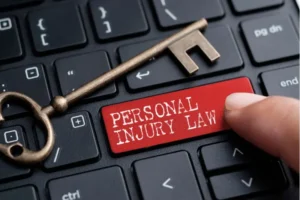Personal Injury: Information You Should Know~3 min read
 If you’ve had an accident you feel was not your fault, you may be considering a lawsuit. It’s not always that simple. An injury doesn’t mean an automatic payout. There are some qualifications you need to meet to know if you have a personal injury case. Use this guide to help you figure out your next steps to finding justice.
If you’ve had an accident you feel was not your fault, you may be considering a lawsuit. It’s not always that simple. An injury doesn’t mean an automatic payout. There are some qualifications you need to meet to know if you have a personal injury case. Use this guide to help you figure out your next steps to finding justice.
Burden of Proof
The plaintiff has the burden of proof in a lawsuit. That means you must have evidence to prove who was at fault and your damages. To determine if you have a personal injury case, here’s what you must prove:
- The responsible party was negligent. For example, if you’re involved in a truck accident where the truck driver fell asleep, the truck driver was negligent. Now, let’s say you’re driving your vehicle and another driver runs a red light while texting and crashes into you. In most states, texting and driving is against the law and so is running a red light. Therefore, the driver who causes the car accident was negligent.
- The negligence is what caused the personal injury. Your injury must be directly linked to the negligence. If you have a broken arm after being hit by the sleeping truck driver, the negligence caused personal injury. If you had to have a hip replacement after the texting incident, the negligence caused the personal injury. But, if you already had issues with your hip before the accident, a personal injury claim may or may not be appropriate. Medical records would need to be reviewed in this case to determine if the injury “aggravated” a pre-existing condition. If it did, you may still have a claim.
- The accident resulted in damages other than injury. Examples include, out of pocket expenses for medical treatment, destroyed computers or glasses, lost income from missed worked, or payments for counseling to treat anxiety. Those are a few of the things that would be considered compensatory damage. As stated above, all of the damage must be related to the negligence causing the wreck.
Supporting Documents
It also helps to document activities that occurred during the accident that may have caused the injury. This will be helpful for your personal injury attorney to determine if you have a case. It’s always good to write down what the other driver said to you at the scene as well as what other witnesses reported.
You also need to gather documents that help prove you meet the three qualifications above. Start by collecting the following:
- Witnesses or Witness Statements
- Photographs of the scene or the injuries
- Medical Records
- Proof of expenses related to the injury
- Verification of days missed from work
- Proof of income or business revenue
- Police reports
- Insurance claim records
To have a strong personal injury case, you must meet the qualifications above. You also need to follow doctors’ orders and get the treatment they recommend. The only way to truly know if you have a case is to see one of the personal injury attorneys at Springer & Lyle, who can help you evaluate your claim and get the compensation you are entitled to if you have one. Contact us at 940-387-0404 for a free consultation.






